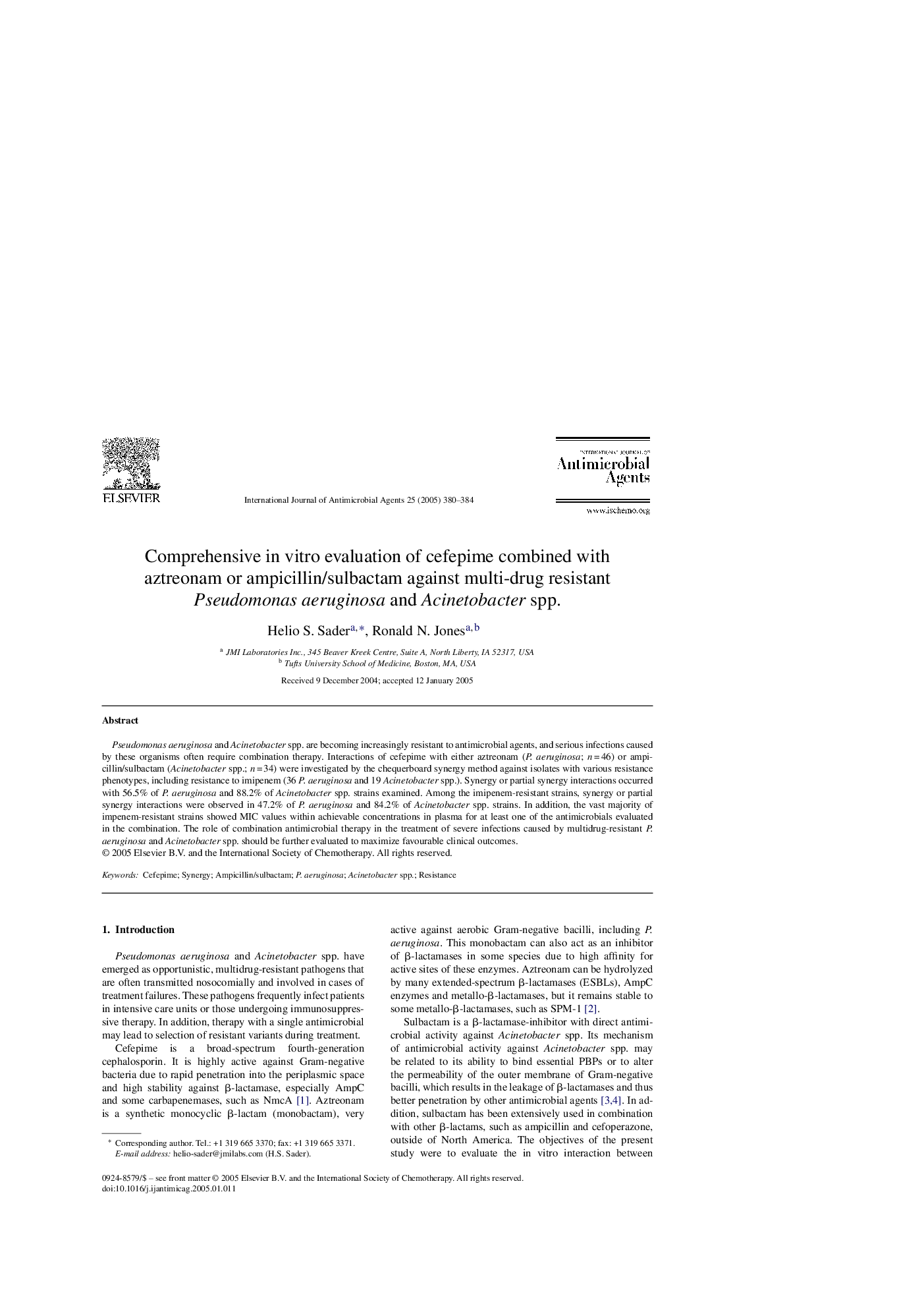| Article ID | Journal | Published Year | Pages | File Type |
|---|---|---|---|---|
| 10027935 | International Journal of Antimicrobial Agents | 2005 | 5 Pages |
Abstract
Pseudomonas aeruginosa and Acinetobacter spp. are becoming increasingly resistant to antimicrobial agents, and serious infections caused by these organisms often require combination therapy. Interactions of cefepime with either aztreonam (P. aeruginosa; n = 46) or ampicillin/sulbactam (Acinetobacter spp.; n = 34) were investigated by the chequerboard synergy method against isolates with various resistance phenotypes, including resistance to imipenem (36 P. aeruginosa and 19 Acinetobacter spp.). Synergy or partial synergy interactions occurred with 56.5% of P. aeruginosa and 88.2% of Acinetobacter spp. strains examined. Among the imipenem-resistant strains, synergy or partial synergy interactions were observed in 47.2% of P. aeruginosa and 84.2% of Acinetobacter spp. strains. In addition, the vast majority of impenem-resistant strains showed MIC values within achievable concentrations in plasma for at least one of the antimicrobials evaluated in the combination. The role of combination antimicrobial therapy in the treatment of severe infections caused by multidrug-resistant P. aeruginosa and Acinetobacter spp. should be further evaluated to maximize favourable clinical outcomes.
Related Topics
Life Sciences
Immunology and Microbiology
Applied Microbiology and Biotechnology
Authors
Helio S. Sader, Ronald N. Jones,
